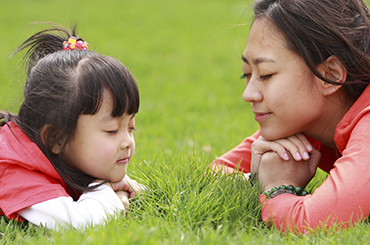Controlling Allergies in Spring and Early Summer

Springtime brings sunshine, green grass, chirping birds, blooming bulbs and if you’re unfortunate enough to be a member of the sniffling, sneezing and itching community, then it’s time to carry your tissues. It’s the time of year when flowers, trees and ground molds release their pollen and spores into the air — better known as spring allergy season.
For some, the regional allergy season can begin as early as mid-January and last well into August. What causes this violent reaction in your body, how long will it last and what can you do to find relief?
It all starts with your immune system, which protects your body against microscopic organisms like bacteria and viruses. With seasonal allergies, your immune system overreacts to harmless pollens, dusts and molds.
These grains of pollen, dust or pet dander enter your nasal passages or mouth cavity and your immune system releases its histamine stores and other biochemicals, from mast cells, into your body.
These chemicals trigger a cascade response that results in helping to expel the offending agent by dilating blood vessels and increasing mucus production. This overreaction means you will suffer from sneezing attacks, coughing fits, watery or puffy eyes, itchy or flushed skin and even a sore throat, fatigue and headaches.
The timing for suffering from seasonal allergies is due to the cyclical nature of when trees, grasses and flowers in the Northwest begin to bloom and release their pollen. Typically, the peak tree-pollen season is from February to May, and grass and weeds allergy season is from April through July. Some years the season can span all the way through September.
In addition, our region offers a breadth of weather patterns that make predicting the start and stop of allergy season frustrating. Coupled with continual exposures of other allergens, such as pet dander and dust mites, seasonal allergies can last all year long.
Prevention is the best medicine and trying a few of these minor lifestyle changes can go a long way toward keeping your symptoms under control:
- Limit your early-morning outdoor time (5-10 a.m.) as this is when most plants and trees disperse their pollen.
- Avoid using fans that blow outdoor air into your home, as this can pull in pollen from outside.
- When driving, use your air conditioner to help to filter larger sized allergens.
- Use a dehumidifier to decrease mold growth in your home.
- Shower frequently to remove pollen from your skin and hair.
- Bathe your indoor pets regularly to remove pollen from their fur, and discourage them from sleeping in your bed or on other furniture.
- Use a face mask if you plan on doing extended gardening or mowing the yard.
For fast relief of mild symptoms, I recommend twice-a-day normal saline nasal rinses or using devices, such as a Neti pot, that will help to irrigate your nasal passages and rinse your sinuses. Over-the-counter antihistamines, such as Claritin and Benadryl, are great options and usually safe for most people and readily available at most drugstores.
Additionally, several types of antihistamine eye drops and mast cell stabilizers or corticosteroid nasal sprays are becoming more common over the counter. While eye drops can provide relief for itchy eyes, nasal sprays can help reduce swelling and irritation in your nose. These may help to augment other home treatments.
For those seeking more robust medical treatments and longer-term relief, there are two main forms of immunotherapy treatments, including intramuscular injections or sublingual drops. Both depend on a daily to weekly low-dose exposure to allergens to help remodel your immune system and thus decrease allergy symptoms.
These methods should be prescribed and followed closely by your doctor or allergist. Further research is focused on stopping the overall production of specific types of antibodies and the entire out-of-control cascading allergic response.



